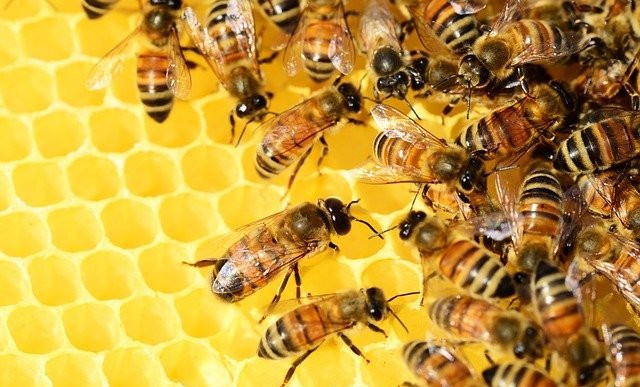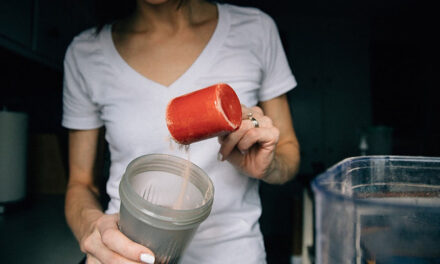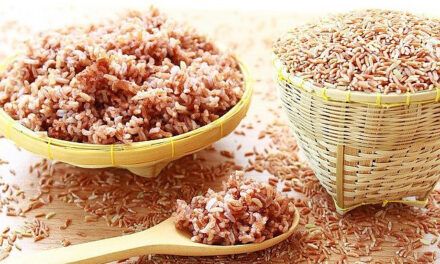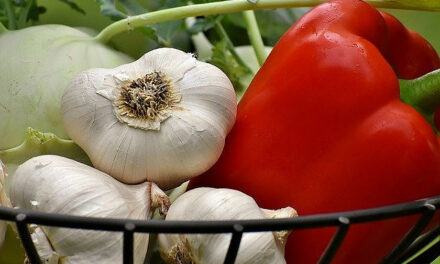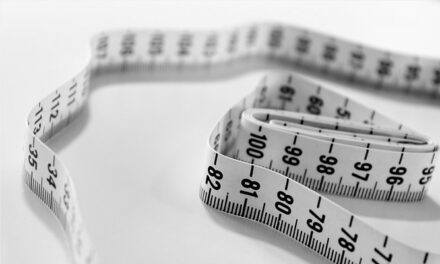We all know about honey in general. But do we know if there exist different types of honey as well! There are different types of honey depending on the region where the honey bees exist, because of the different flowers from which the bees collect the nectar to produce honey. This article will find out more about raw honey and diabetes to address a few questions of your concern. For example, is raw honey good for diabetics?
Before talking about the relationship between raw honey and diabetes, let’s define raw honey first.
What is Raw Honey?
Raw honey is the unfiltered honey that drips from the honeycomb as you break or squeeze the comb.
For ages, honey has been known to humankind as a sort of medicinally valued product. In many cultures across the world, honey has been used to treat skin disorders like eczema or ulcers, including any cuts or wounds.
Honey is also known to soothe the throat due to cough or even ease your asthmatic condition, apart from being a very good antibacterial agent.
Honey is sweet and, therefore, high in sugar or glucose and fructose. Because of the sugar content, honey is full of carbohydrates, an important point to remember!
Raw honey has various other components in it, such as minerals and vitamins.
As you collect raw honey from the honeycomb directly, you get the beeswax and other impurities in your collection. Once filtered, the honey is ready for all your requirements, such as medicinal application or edible consumption.
Differences Between Honey and Raw Honey
Honey, in general, is what we see on the shelves of supermarkets. When you find the container marked simply as honey, then the honey is processed. In contrast, raw honey is simply unprocessed and drawn straight from the beehive.
Below are a Few Differences Between Raw Honey and Honey.
|
Raw Honey |
Honey |
|
Raw honey comes directly from the beehive and can contain dead bees, beeswax and pollen. Raw honey is either opaque or cloudy because of its elements due to direct extraction from the hive. |
Honey, in general, is referred to as the regular honey we get off the shelves in supermarkets. This honey would have undergone the process of pasteurization, to kill yeast cells, and increase the shelf life. |
|
Raw honey is full of natural nutrients and antioxidants. |
Pasteurized honey may have fewer nutrients due to the heating process. |
|
The texture and color of raw honey depend on the flowers the bees would have visited. |
Pasteurized honey always looks improved in its appearance and color than raw honey. |
Let us get an understanding about what constitutes honey, and in comparison with the constituents or elements of sugar:
Below is the average chemical / nutritional composition of honey compared to sugar.
|
Component/100 g |
Honey∗ |
Sugar |
|
Glycemic index |
58 |
60 |
|
Calories |
300 Kcal |
387 Kcal |
|
Sugars |
80.0 g |
99.9 g |
|
Lipids |
0.02 g |
— |
|
Protein |
0.3 g |
— |
|
Calcium |
6.0 mg |
1.0 mg |
|
Iron |
0.42 mg |
0.01 mg |
|
Magnesium |
2.0 mg |
— |
|
Phosphorus |
4.0 mg |
— |
|
Zinc |
0.22 mg |
— |
|
Potassium |
52.0 mg |
2.0 mg |
|
Vitamin C |
0.5 mg |
— |
|
Vitamin B2 |
0.038 mg |
0.019 mg |
|
Vitamin B3 |
0.121 mg |
— |
|
Vitamin B5 |
0.068 mg |
— |
|
Vitamin B6 |
0.024 mg |
— |
|
Vitamin B9 |
2.0 μg |
— |
|
Water |
17.0 g |
0.03 g |
| ∗Values specified for honey represent an average of floral and honeydew honey. |
What Is The Difference Between Organic Honey And Natural Honey?
Organic raw honey is not pasteurized or heated and beneficial due to the naturally occurring enzymes and nutrients. Also, the flowers from which the bees have collected the nectar are all organic flowers, free of any chemicals.
Think of a forest where you don’t spray any chemicals to maintain that forest; therefore, you get organic flowers there. Hence the production of organic honey by the bees in the woods.
On the other hand, natural honey is similar to raw honey but not necessarily honey from the forest region. In general, natural honey can be any honey from the beehives you find naturally built in the environment. Apart from forests, flowers may contain chemicals or pesticides.
Bees collecting pollen or nectar from such flowers tend to make honey, which is not organic but naturally occurring.
Beehives from apiaries also do not produce organic honey. An apiary is an artificial beehive or man-made beehive.
Use of Raw Honey in Diabetes
Honey is full of sugar, as we have seen from the nutrition content table above. Therefore, sugar definitely affects diabetics. But honey doesn’t seem to be causing as much harm as pure sugar does.
Though the effect of sugar in honey is seen immediately after consuming honey, the effect may soon subside. In fact, there are a lot of health benefits in consuming honey by people with pre-diabetes compared to sugar.
There are not many studies, but whatever studies made have concluded one thing in common – sugar levels increased immediately and within 2 hours after consumption of honey but decreased after that.
Apart from sugar levels, other benefits were reduction in triglycerides and increase in good cholesterol. Therefore, in moderation, honey has benefits. So, don’t consume more than a teaspoonful of raw and organic honey, if you have diabetes, depending on the severity of diabetes.!
Definitely a big no to processed honey which may contain sugar or syrup. More studies need to be done, though.
Is Raw Honey Definitely Safe? What Does Research Say?
Honey is definitely lower in glycemic index than of sugar, though by a slender margin.
Glycemic index is the measure of the rise of blood sugar level due to carbohydrates. But honey has other components in it, unlike sugar, such as vitamins, minerals and antioxidants, if it is raw or organic honey.
Considering the anti-inflammatory quality of honey, diabetics prone to higher levels of inflammation will find honey more useful. Since sugar or carbohydrates in honey cause a spike in blood sugar levels, you should be mindful of consuming honey in moderate quantity.
Turkish research on type 2 diabetics found that 5-25 grams of honey intake daily for 4 months did reduce blood sugar levels. An Egyptian study in 2016 was, however, contrary. Therefore, more studies involving a greater number of diabetic patients need to be done, to ascertain facts.
Is Raw Honey Good for Diabetics?
In moderation, intake of raw honey is definitely good for diabetics compared to consuming sugar. Soon after consuming raw honey, the blood sugar levels spike up in the first two hours after consumption. But thereafter, the sugar levels come down. Therefore, it is recommended that 1-2 teaspoonful of raw honey taken two times a day is more than enough.
Diabetics are known to be prone to inflammation. Due to the anti-inflammatory features of honey, it is definitely helpful for people with diabetes to keep inflammation at bay.
Again, keep in mind to not consume more than 2 teaspoonfuls or about 15 grams of honey at a time, and not more than two times a day!
Apart from inflammation, any cuts or wounds can also be immediately dressed with the application of a thin layer of honey on the affected area. Raw honey is a very good antibacterial agent too!
When Is Raw Honey Bad For Diabetics?
As already mentioned, you should be very mindful of the intake of honey. Apart from the quantity, the quality of the honey also matters.
You get honey in the supermarkets that are labeled differently and other than as raw honey or organic honey. Such differently labeled or simply labeled as honey brands are not ideal for people with diabetes.
Such honey brands contain more sugar content, and since they are pasteurized, less nutrients and other naturally occurring substances like antioxidants.
Otherwise, raw honey is good for people with diabetes when consumed in fewer quantities and for a couple of times in a day at the most. There are conflicting views on whether honey is really beneficial for its antioxidants and antibacterial features.
Well, there foods that take care of those features but compared to sugar which is pure carbohydrates, honey is a better choice.
Does Raw Honey Raise Blood Sugar Levels?
Raw honey also raises blood sugar levels. Since most of the content is sugar, as seen from the nutrition table for honey, it is not good to consume honey in large amounts.
The maximum one can allow per serving of two servings a day, is 25 grams. Therefore, a maximum of 50 grams of raw honey a day is permissible for intake.
If you have diabetes and using insulin, you should be aware of your daily carbohydrate intake, since honey is mostly carbohydrates. Otherwise, you can easily make honey part of your diet by replacing other carbohydrates.
How Can Diabetics Consume Raw Honey?
Raw honey can be consumed in various ways, as you may feel to do so. You should only ensure that you can take about 7 teaspoons of honey spread over the whole day. One teaspoon each in the morning and at bedtime while 5 teaspoons of raw honey can be had during the day as you may like.
Compared to sugar which has 50% fructose, and corn syrup which has anywhere from 40 to 90% fructose, honey has 40% fructose. High fructose consumption can cause liver disease and even affects metabolism. Therefore, honey is better than other sweeteners considering the fact that honey contains other nutrients and antioxidants.
Antioxidants help our cells to a great extent in avoiding any damage to the cells.
Honey also contains amino acids that are very much needed by our body in building blocks of proteins. Other benefits include reducing cardiovascular risks, cholesterol and blood sugar levels to some extent.
Again, the consumption of raw honey in moderation is the key for all these benefits to be achieved.
Tip: Remember, Honey Nut Cheerios is not a good option for diabetes as explained in the above video.

